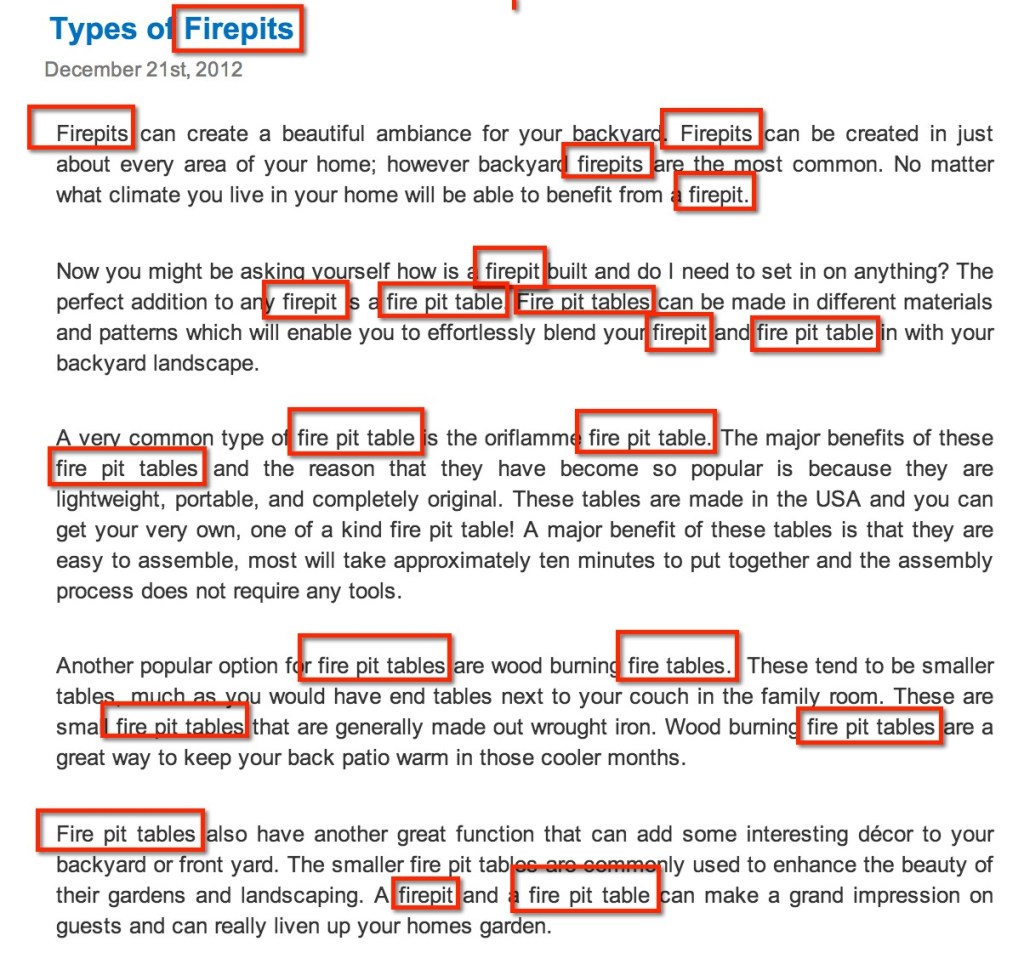Do you know what is the right amount of keywords to include in SEO-optimized content? What is the limit of using maximum keywords? What to do if search engines flag my website for keyword stuffing? Don’t worry, in this blog, I’ll break down the importance of keyword density and how it works in greater depth. I will also guide you on how to use tools which can verify whether or not your keyword tactics are producing the desired results.
So what are you waiting for? Let’s start!!!
So first things first, many people say that keyword density is a myth? Is it true? What do you think?
Well no!! Keyword density is definitely not a myth. It is essential to make use of primary and secondary keywords, and it is also essential to monitor the frequency with which you deploy them in your writing. A common misconception about SEO is the importance of keyword placement rather than sheer repetition.
So what I am trying to say is not only, the location of the keywords inside the content is crucial, but also the overall keyword density matters. Thus, Google places a significant amount of importance on both the keyword density and the position of the keywords.
What is the importance of keyword density?
It is essential because it enables search engines and website users to comprehend the content of a certain page.
If you go and ask a SEO professional what it takes to get to the top of search engine results pages, they will almost certainly say, “Great content with good keyword density.”
It is essential to get the keyword density just right. This is due to the fact that writing repeated keywords will have a negative effect on the ranking page of that article in Google
What is the ideal keyword density for 1000 words?
There is no single optimum value. The content and keyword should be evaluated separately to determine the optimal keyword density. If you’re going after long keywords, for instance, you can get away with a lower keyword density. In contrast, if you want to use short keywords, then it’s a good idea to use more keyword density.
According to my studies and findings, an ideal keyword density ranges from 1 to 2 %. Therefore, if you are writing a blog post that is 1,000 words long, you need to use your keyword approximately 10–20 times. I usually prefer to stick to 1% for 1000 words blog.
A number of different assertions have been made regarding the “best” keyword density that one should strive for. You might hear 2%, 6%, or even 8%. But I believe that maintaining a keyword density of 2% is a smart practise.
A user from Bay Area of California asked a question to Matt Cutts in Google Search Central. The question was, “What is the ideal keyword density: 0.7%, 7%, or 77%? Or is it some other number?”
Matt Cutts’s Answer
Oh, boy.
Keyword density, let’s talk about it a little bit. A lot of people think there’s some one recipe and you can just follow that like baking cookies. And if you follow it to the letter, you’ll rank number one. And that’s just not the way it works.
So if you think that you can just say, I’m going to have 14.5% keyword density, or 7%, or 77%, and that will mean I’ll rank number one, that’s really not the case. That’s not the way that search engine rankings work.So the way that modern search engines, or at least Google, are built is that the first time you mention a word– hey, that’s pretty interesting. It’s about that word. The next time you mention that word, it’s still about that word. And once you start to mention it a whole lot, it really doesn’t help that much more. There’s diminishing returns. It’s just an incremental benefit, but it’s really not that large.
And then what you’ll find is if you continue to repeat stuff over and over again, then you’re in danger of getting into keyword stuffing, or gibberish and those kinds of things.
So the first one or two times you mention a word, then that might help with your ranking, absolutely. But just because you can say it seven or eight times, that doesn’t mean that it will necessarily help your rankings.
So the way to think about it is this. Think about the keywords that you’d like to have in your copy. Make sure your copy’s long enough so that you can work those keywords into your copy in a natural way and not an artificial way. And my recommendation is to either read it aloud, or read it to someone else, or have someone else read it, and sort of say, do you spot anything that’s artificial, or stilted, or it doesn’t quite read right? And if you can read through the copy and have it read naturally where a person isn’t going to be annoyed by it, then you’re doing relatively well.
But if you’re like one of these guys where all you’re doing is– I know you’re interested in red widgets because red widgets are one of the best things in the world to have. And if you’re an expert on red widgets, then you’ll know that the best source of red widgets is blah, blah, blah, blah, blah. Then that’s really going too far. And you can really kind of tell whenever you land on a page if you’re an experienced SEO, if someone’s just like trying to get the same phrase on the page as many times as possible, because it just looks fake. And that’s the sort of area in that niche where we try to say, rather than helping, let’s make that hurt a little bit.
So I would love it if people could stop obsessing about keyword density. It’s going to vary. It’s going to vary by area. It’s going to vary based on what other sites are ranking it. There’s not a hard and fast rule. And anybody who tells you that there is a hard and fast rule, you might be careful, because they might be selling you keyword density software or something along those lines.
So I hope that helps. Maybe we can dispel that misconception and people realize not to worry that much about it. Just make sure you have the words that you want to have on the page. Make sure that they read naturally. And you should be in pretty good shape. Thanks very much.
He stated that focusing too much on keyword density can be counterproductive and may result in keyword stuffing, which is an SEO practice that violates search engine guidelines.
Focus on providing comprehensive information, using natural language, and incorporating relevant keywords organically throughout the content. This way, search engines can understand the topic and relevance of your page without relying solely on keyword density.
What percentage is considered an unacceptable range of “keyword density”?
When it comes to the appropriate level of keyword density, there is not one particular figure that may be considered excessive. Always keep in mind, you won’t get penalised by search engines if you avoid keyword stuffing.
However, if the keyword density of your material is higher than 2%, you should evaluate it once more to ensure that it flows naturally. After that, make any necessary edits
Calculation of keyword density for 1000 words
Typically, it is presented in the form of a percentage. In order to calculate, you need to divide the total keyword count by the overall word count of that particular blog. After that you need to multiply that particular number by 100.
For instance, if you write a blog that is 1000 words long, then the ideal keyword density is 1%. Similarly keyword density of 3% can be achieved if the phrase or keyword is used 30 times in the content. Also, the keyword density of an article is calculated as 2.6% if the article contains 1,000 words and the keyword is utilised 26 times.
It is always a good idea to avoid keyword stuffing as it will have a negative impact on your website and could result in a penalty for your site. Later on, in this blog, we’ll talk about the technique of overusing keywords, sometimes known as keyword stuffing.
I hope now it’s clear how to calculate your keyword density
Experts in search engine optimisation may likely urge you not to stuffing keywords. Right? But why? Let’s find out
So what is keyword stuffing?
Consider reading a blog and repeatedly coming across the same sentence or keyword again and again. This is nothing but keyword stuffing.
When you repeatedly use a keyword multiple number of times, it is called keyword stuffing. The above example is a perfect example of keyword stuffing. According to Google’s quality criteria, this behaviour is not acceptable. Including a term repeatedly will not automatically boost your page to the top of Google’s search results. This seemingly clever black hat SEO strategy will get you banned from Google if you use stuffing keyword multiple times. Repeatedly using excessive keyword repetition is a major no-no in their quality standards. This may result in fines and/or the de-indexing of your site from their service

As an example of keyword stuffing, consider the following situations:
- Using the same phrases over and over on purpose
- Inserting terms that are not relevant to the discussion at hand
- Listings of telephone numbers that do not offer a significant additional value
- Sections of text that list the states and cities for which a website is attempting to rank in search results
Remember- Keyword stuffing is a big no! Therefore, we always stress how important it is to not overuse keywords. Keep in mind, though, that each of these phrases has its own density. If you’re concerned that your percentage of keyword for a given term is too high, then don’t panic. To strike a better balance, try switching out a few occurrences with a semantic equivalent.
Why is Google so concerned about keyword density?
It is because one of the requirements for a website to be Google-friendly is excellent quality. Your content must not only be of good quality but also relevant in order for it to rank well for a particular keyword.
This can be accomplished in part by strategically inserting keywords into the blog and then using those phrases multiple times. However, if you do such an excessive amount of times, this is known as keyword stuffing. This may result in Google penalising your site
Good Keyword Density- best practices
- Consider your Audience- In business, the consumer always comes first. Think about your audience and how you can best capture their attention. When you know who you’re writing for, ideas come easily. Think like the reader to determine if the item holds any interest for you. The next step is to visualise how you want the information presented. This way you can rank high in Google
- Make Sure You Put Your Keywords Where They Belong- After you have ensured that your content flows well, you will need to insert keywords and achieve an appropriate level of keyword density. But before you continue to insert keywords, you must first become familiar with the appropriate areas to include them
- Avoid Keyword Stuffing- If you don’t want to upset your readers or get penalised by search engines, you should refrain from overusing keywords in your text. Utilising alternate terms of the target keyword inside the body of your article is one of the most effective strategies to accomplish this goal.
- Produce good quality content- The above strategies will only be effective if your blog content is superior. Get the content done first. Once that’s done, read it through and look for places you may include the essential keywords by swapping out others. In this way, you can improve the product without sacrificing quality
Keyword Density Tools
Now that you learn about some best practices for Good Keyword Density, now let’s start with some keyword density tools.
- SEO Keyword Density Checker– This free tool operates within a web browser. To run a keyword density test, all you need to do is enter the URL of your content website. It’s a wonderful method of surveying the current state of keyword usage. It flags keywords which are overstuffed in a different colour, making it easy to determine which ones should be reduced
- SEOBook Keyword Density Analyzer– This tool is almost same as the previous one. But here in this tool, signing up for an account is mandatory. You may also perform a Google search using this tool using your chosen term. After that, it examines them to determine where your keyword stands in comparison to others
- Copy-writely Keyword Density Checker-Using this tool, you can see how frequently each of your top keywords appears. This tool has fewer features than the others available. It doesn’t let you choose or filter out stop words. However, it is an excellent tool for getting started
- Semrush’s On-Page SEO Checker– A function called “keyword phrase usage” is included in this tool which checks for overuse of specific keywords. The software does automated SEO checks and generates reports, as well as evaluating keyword density. You can use it to see how your keyword density stacks up against that of your competitors. However, it comes with monthly plans beginning at $119.95
Clearly, keyword density is a crucial component of any effective SEO campaign. Building content that is effective can be made easier by increasing keyword density.
Thus, when talking about optimising for keywords, having a high keyword density is vital. However, you must strike a balance between too few keywords and too many. Utilising SEO services can help you keep things in check. You can use it to insert the appropriate keyword and analyse how well it fits into the text and flows. You may improve your search engine ranks and achieve the desired keyword density in this manner.
Also read,
Minimum Length of Content in Low Competition Keywords
Between short-tail and long-tail keywords, which is the most effective for SEO?






